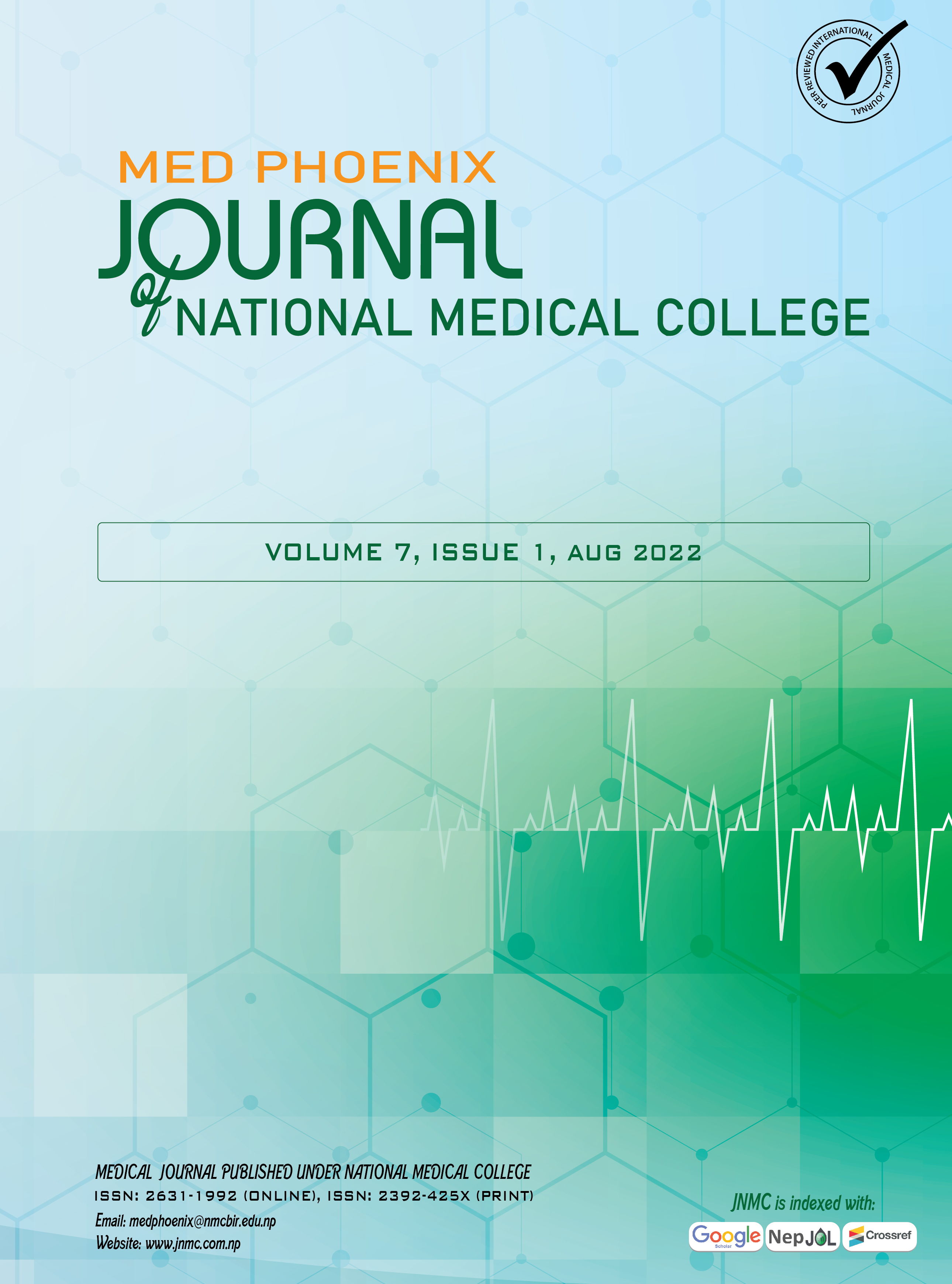Functional and Radiological Outcomes with Intramedullary Interlocking Nailing of Tibial Shaft Fracture
DOI:
https://doi.org/10.3126/medphoenix.v7i1.47176Keywords:
Tibia shaft, Fracture, Functional and radiological outcome, Intramedullary nailingAbstract
Introduction: Tibia is the most common long bone involved in fracture
during Road Traffic Accident (RTA) because of its subcutaneous location.
Intramedullary nail fixation remains the treatment of choice for unstable
and displaced tibial shaft fractures in the adult. The goals of surgical
treatment are to achieve osseous union and to restore length, alignment,
and rotation of the fractured tibia. Intramedullary nailing carries the
advantage of minimal surgical dissection with appropriate preservation of
blood supply to the fracture site.
Materials and Methods: This is a prospective observational study
conducted in the Department of Orthopedics, National Medical College and
Teaching Hospital,Birgunj, Parsa, Nepal for the 1 year duration. Patients
included in this study were above 16 years with Tibia shaft fracture with or
without fibula fracture which includes Type I,II and IIIA of Gustilo-Anderson
fracture. Patients with tibia shaft fracture were treated surgically by using
intramedullary interlocking nail then follow up done in OPD at regular
intervals during which radiographs was taken in appropriate views and
diagnosis is established by functional and radiological means.
Result: Out of 53 patients, 45 patients with Tibia shaft fracture are treated
by closed intramedullary interlocking nailing in the National Medical
College, Birgunj. Eight patients are lost during follow-up. In our study
tibia shaft Fracture was more common in male (77.8%) than female which
mostly involved 18-30 years of age group (62.2%) and most common cause
was Road Traffic Accident (82.2%). Thirty cases (66.7%) had excellent and
10 cases (22.2%) had good healing and complication were seen in eight
patients (17.7%).
Conclusion: Closed interlocking tibia nailing allows earlier fracture union
with less morbidity. Because of the high union rate and low infection rate,
we consider closed interlocking nailing as the best mode of treatment for
diaphyseal tibial fractures.
Downloads
Downloads
Published
Versions
- 2022-08-22 (3)
- 2022-08-21 (2)
- 2022-08-19 (1)
How to Cite
Issue
Section
License
Copyright (c) 2022 Med Phoenix

This work is licensed under a Creative Commons Attribution 4.0 International License.
Copyright on any research article is transferred in full to MED PHOENIX upon publication. The copyright transfer includes the right to reproduce and distribute the article in any form of reproduction (printing, electronic media or any other form).
© MEDPHOENIX
![]()
Articles in the MED PHOENIX are Open Access articles published under the Creative Commons CC BY License (https://creativecommons.org/licenses/by/4.0/). This license permits use, distribution and reproduction in any medium, provided the original work is properly cited.




